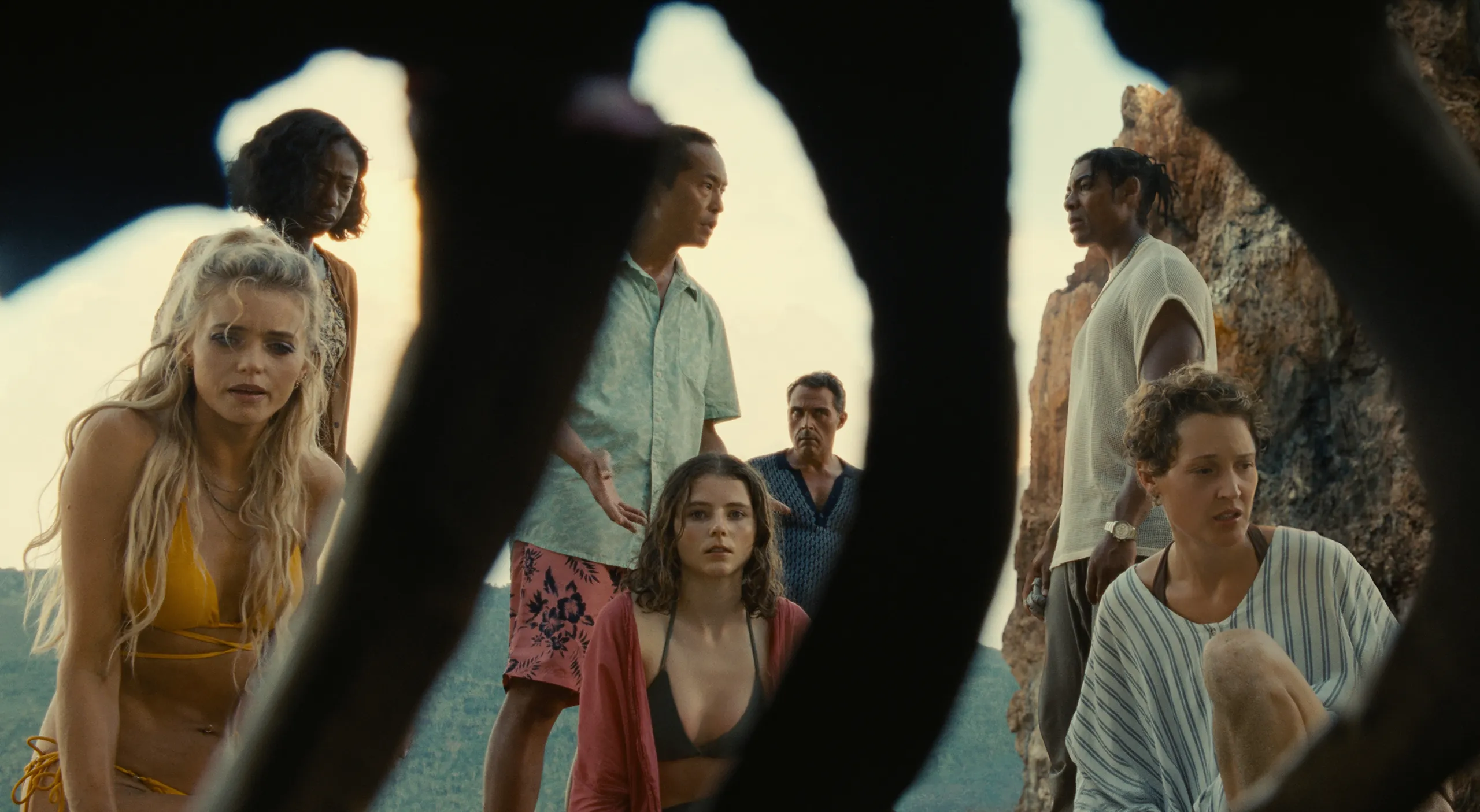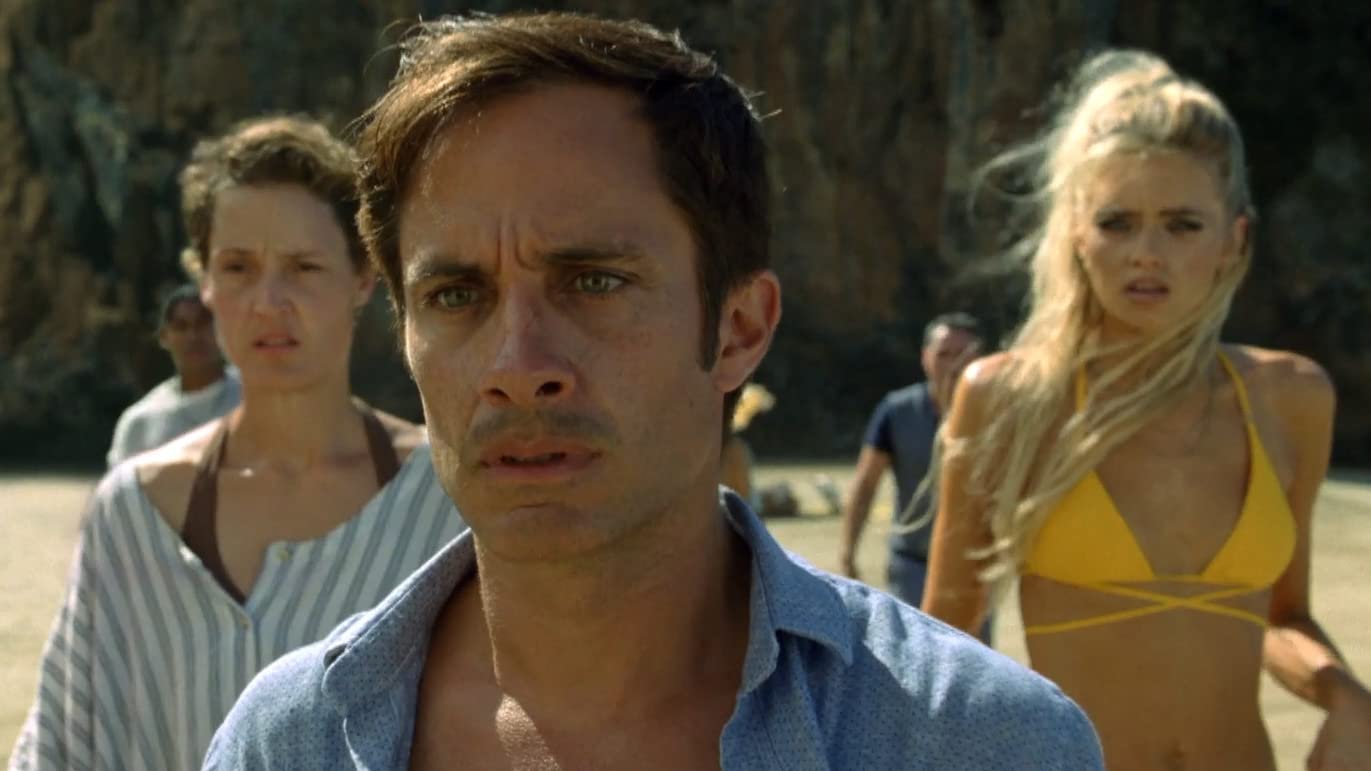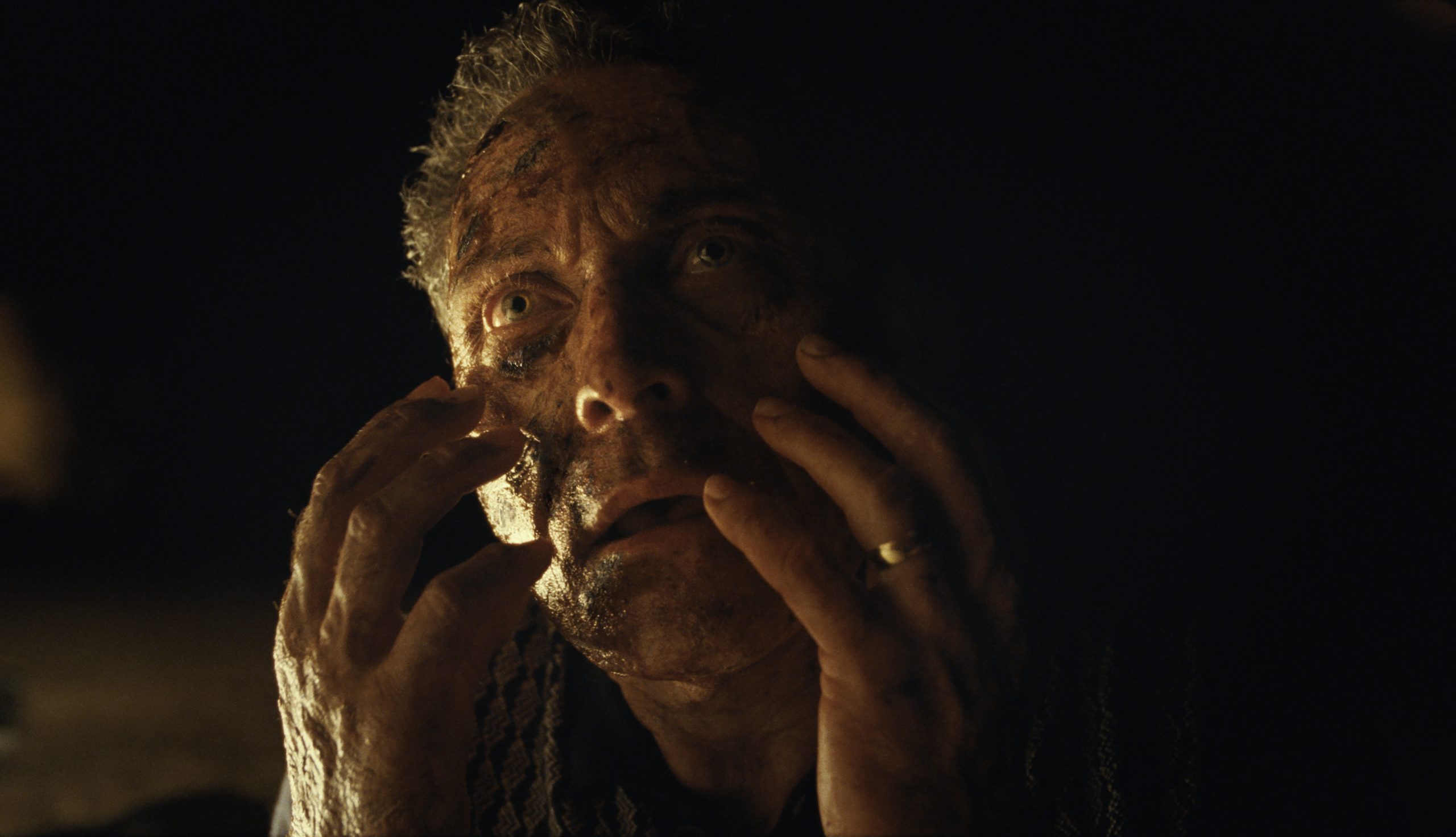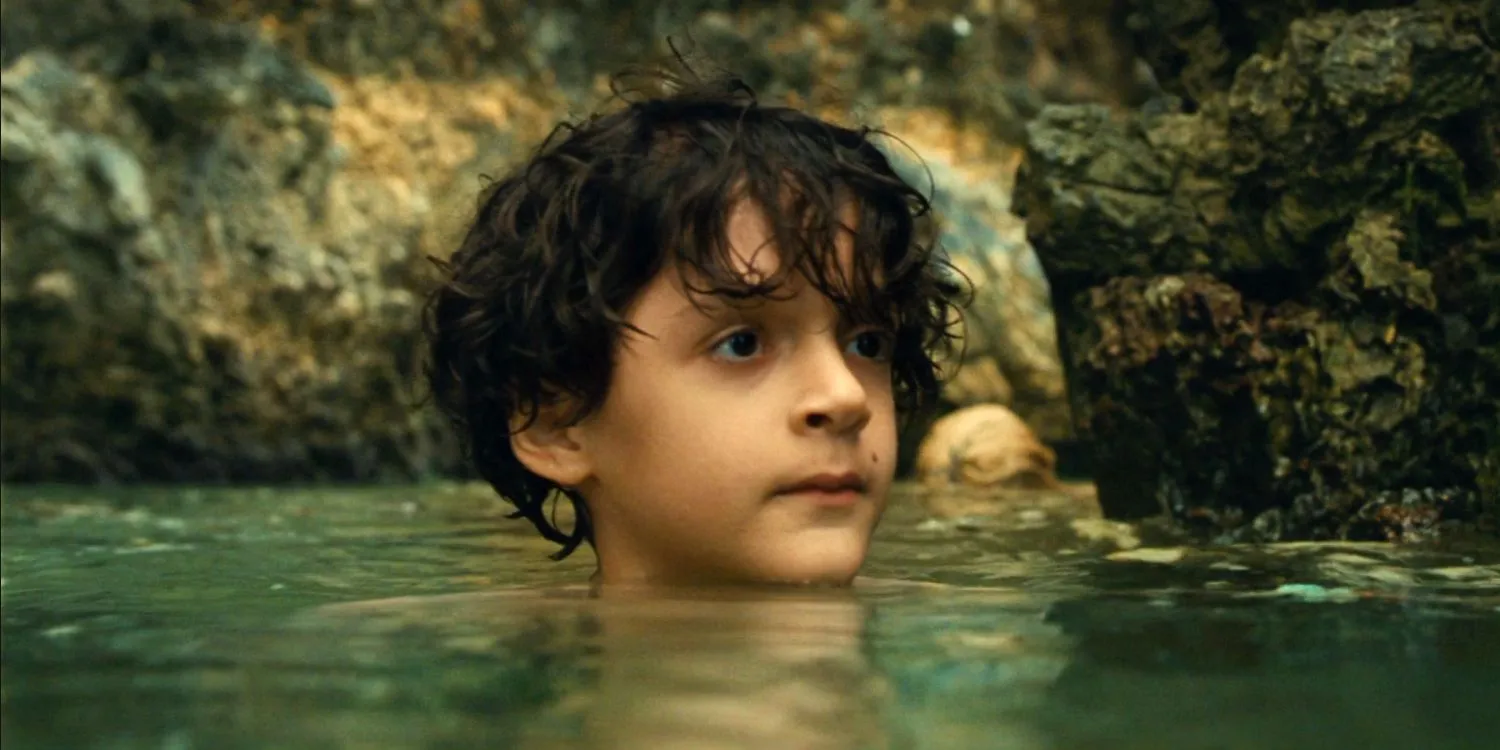Hold on, M. Night Shyamalan is aware of your thoughts. Everything also has hints. He is aware that since The Sixth Sense, viewers have been wary of his work due to the late-stage, almost-spontaneous placement of concepts and cues that many viewers were not even aware they were supposed to be looking for.
And because everyone is so preoccupied with catching fish, we fail to notice the more enduring joys that he displays right in front of our eyes, such as his continually remarkable skills as a stylist and technician, which he shares with his renowned colleagues.
He is perfectly aware that it is only because of our own, ingrained assumptions that he is the contemporary counterpart of O. Henry, a name associated with “twist.”
A getaway with the family to a remote beach. The mother talks about how she can not wait to hear her daughter’s singing voice as she gets older, and they have a casual conversation about time passing like parents frequently do with their kids.
Soon after, it is revealed that mom might not be able to do so because of a tumor, and that this might be her “last journey,” either for the sake of her declining physical condition or for the reason of her failing marriage. At various periods in your life, the passing of time alters, but none more so than when you see your children growing up too quickly and are concerned that you may not be able to witness the majority of their journey.
When M. Night Shyamalan’s “Old,” based on the book by Pierre-Oscar Lévy and Frederick Peeters, plays with those feelings philosophically while still allowing itself to be strange and scary in the process, it actually works. “Old” delves into these concerns with just enough elegance to engage the audience easily. The resort owner informs them about a remote beach where they can avoid the holiday crowds, and they’re driven there by none other than M. Night Shyamalan in perhaps his most meta presence (after all, he is the director).
A doctor called Charles, his wife Chrystal, his mother Agnes, and his daughter Kara join the family. Jarin and Patricia, a third pair, joins them. When they get at the beach they meet a rapper nicknamed Mid-Sized Sedan,as well (yes, that is his name in the movie).
They all grow up so fast

The beauty of this beach, encircled by high stone, feels dangerous from the moment they arrive. As the day progresses, the waves crash and the rock wall appears to grow taller. They pass out and wake up on the beach when they try to walk back the way they came. Then things get really strange when Trent and Maddox’s ages abruptly leap five years in a matter of hours. The adults realize that every half-hour spent on this beach is equivalent to a year away from it. As the children grow older, the adults suffer their own health challenges, such as hearing and vision impairments, dementia, and Prisca’s tumor. Is it possible for them to leave the beach before the 24-hour mark?
Night Shyamalan showed two films for his actors and crew prior to shooting, both of which were believed to have had a huge influence on the aesthetic and tone he intended for Old. The first was Nicolas Roeg’s Walkabout, which was released in 1971. The second was Peter Weir’s Picnic at Hanging Rock (1975). “Stories about human beings striving against the enormous power of nature,” Shyamalan said, referring to films in which nature takes on a cryptic, tremendous, almost otherworldly quality.
A movie that ages like fine wine

The beach, like a ticking time bomb, forces some much-needed introspection. The threat of death, as it always does, brings families closer together. Priorities are reviewed and re-evaluated. Petty quarrels are forgotten and forgiven. Parents are forced to watch their children grow up in the blink of an eye.
The children’s grief for their parents forces them to confront their own death. The camera is astute in what it shows the spectator since physiological changes are more noticeable in growing children. Rather than using fancy effects, the parents’ shocked expressions do a lot of the heavy lifting here. To keep up with the rapid aging of the children, they are also recast.
Night Shyamalan stated the film’s subject line, in which a group of individuals are stuck on a secluded beach facing with a terrible event, paralleled the feeling of being on lockdown and the confusion surrounding the Coronavirus outbreak, adding: “It was perplexing. We were shooting a film that had nothing to do with the pandemic but was entirely about the anxiety and instability that we were all experiencing. This fear of getting sick. It made us ponder a lot about mortality, resilience, and being in a lock-down situation. The concept of being trapped in a situation and unable to exit it.”
One thing Shyamalan excels at is selecting top-notch cinematographers for his productions. Tak Fujimoto (The Sixth Sense, Signs, The Happening), Eduardo Serra (Unbreakable), Roger Deakins (The Village), and Christopher Doyle (Lady in the Water) are just a few of the directors he’s worked with. Shyamalan reunites with Michael Gioulakis (who previously directed Split and Glass) to create a growing sense of dread.
The rock, the trees, and the lapping waves all point towards something dreadful on the horizon. There’s a distinct sense of danger as a girl undresses and enters the water, similar to Jaws. The threat here isn’t one with razor-sharp teeth, but it does have a lethal bite.
The majority of the characters in Old are dead at the end of the story. Some of them die of old age, while others drown or revert to their previous physical conditions. The resort, it emerges out, isn’t what it appears to be; there’s something really dark going on behind the scenes that brings everyone to the beach in the first place, and it’s a revelation that is both startling and takes the plot of Old full circle. Here’s how the film ended and what the real explanation for the bizarre happenings was. Warning: significant spoilers ahead if you aren’t ready to be spoiled.
Why the players were picked to go to the secluded beach in the first place is one of Old’s central secrets. Even though there were several other guests lounging around the resort, the hotel management was picky about who got special care. The only thing Prisca, Charles, Brenden (Mid-Size Sedan), and Patricia had in common was their medical conditions, as it turned out. Charles was schizophrenic, Brenden had a rare blood clotting issue, and Patricia was epileptic.
Prisca had a benign tumor (which grew three sizes on the beach), Charles was schizophrenic, Brenden had a rare blood clotting issue, and Patricia was epileptic. Because this is still a Shyamalan film, the biggest twist comes at the conclusion, when it’s discovered that the resort is a front for the Warren Warren pharmaceutical firm. The hotel manager is the leader of a group of scientists who have been administering special mixtures that are essentially experimental pharmaceuticals to characters with mental health and physical medical problems.
The scientists chose Prisca, Charles, Patricia, and Brenden because of their illnesses; on the beach, they could monitor their health and see how the medications worked over time. Patricia’s seizure-free streak of 16 years (in beach time) was viewed as a victory by medical staff. The protagonists recognize the link, but they are perplexed as to why their medical histories are important to their vacation at a resort.
The remainder of the individuals, who are relatives of the sick, are only bystanders in Anamika’s scheme; kidnapping solely those with medical concerns would have been far too suspicious, not to mention their families would have noticed their absence right away.
It’s a disturbing revelation, confirming that the boss and his colleagues have been selecting people to die and bringing them to the beach to see how the experimental medications impact them over time and without their consent. While it’s unclear whether the resort existed prior to the pharmacological experiments, the management does point out that the beach is a natural peculiarity.
The experiment criticizes the pharmaceutical and medical sectors, albeit in a minor way, in which people’s lives are considered to be less significant than producing money. Employees of Warren Warren can argue that they’re taking use of a natural occurrence to enhance medicine; drug testing that used to take years to fully comprehend the effects can now be completed in a single day.
However, the toll it takes on people’s lives is enormous, not to mention the fact that the individuals have no voice in the decision. The scientists feel what they’re doing is right, but who, in the end, gets access to the pharmaceuticals they’re testing?
When health insurance and medicine are difficult to come by due to high costs, who benefits from the experiment if not the pockets of pharmaceutical executives and managers? The film explores the ramifications of such self-centered decision-making, particularly when the stakes are so high that the costs exceed all else when it comes to risking people’s lives.
What secrets does the beach hold?

The next puzzle is why, whenever they do try to escape, people faint and wind up back on the beach. The cause of the blackouts is due to magnetism, which creates an immense pressure comparable to how someone would pass out if they tried to acclimatise too rapidly.
As one dives deeper into the ocean, the water pressure increases. Any shift in pressure felt by the body should be gradual and continuous. Someone will lose consciousness if they surface too rapidly from 30 meters below sea level. Similarly, those on the beach are in a state wherein their bodies are aging at a rate of 2 years per hour, and they lose consciousness if they try to return to a normal ageing phase too rapidly.
Shyamalan was strongly influenced by Luis Buñuel’s famed comedy The Exterminating Angel (1962), which also has a group of characters stranded in an otherwise benign area and therefore unable to leave. Shyamalan was so affected by The Exterminating Angel that he used a white palm leaf as the emblem for Old’s beach resort; the identical palm leaf appears in the first shot of Buñuel’s picture.
Why Old should not be missed

A live-action adaptation of anything, whether it’s a book, comic book, or short story, will never be faithful to the original source. To that reason, Sandcastle is Old’s sole source of inspiration. As a result, Shyamalan takes a lot of artistic license with the picture, even giving it a different ending from the original. While both Sandcastle and Old have a similar premise, involving a group of individuals imprisoned on a lonely beach who are fast aging, the latter contains a major twist at the conclusion that answers many of the problems raised in the film.
After all is said and done, add Old to Shyamalan’s filmography’s unrealized promise category. Indeed, it is because Shyamalan takes risks and is uncompromising in his vision — flaws and all — that he continues to inspire audiences, particularly those who are tired of pre-packaged and homogenized entertainment. It’s why he’ll always be remembered as a director whose work leaves audiences eagerly anticipating more.
To end this video with some food for thought, What would you change about the way you lived your life if you knew you were going to die today?
